2016 Subaru Forester Review

I have a lot of respect for those old Subarus that are still on the road. Sure, some of them may grumble around with their boxer engines and many look very dated, but then I see that splatter of mud or that small ding or scratch and understand: that’s proof of an adventure.
When you’ve been on a few great adventures with a car, it’s hard to give it up or replace it. That’s the lesson I learned while I was out testing the 2016 Forester on the Canadian east coast. It may not be the sexiest or sportiest car in its segment, but its capability is hard to beat and when you have the confidence to go anywhere, you’ll end up going everywhere.
Landing in New Brunswick, I found myself face-to-face with a mid-trim level 2016 Subaru Forester. While the design is inoffensive, the boxy look just screams Subaru, and that’s a good thing. It stands out in its own way.
As the power liftgate opened to accommodate my luggage, I’m again reminded of the Forester’s fantastic cargo-carrying capability. There’s up to 34.4 cubic feet of storage with the seats up and an oceanic 74.7 cubic feet with the seats down. Opting for the large moonroof cuts into the cargo space a bit, which is unusual, but the Subaru’s interior design reflects the boxy exterior: practical and spacious.
Familiar Interior
As I jumped into the front seats, one of the biggest changes for 2016 sits in the center console. Subaru now offers its touchscreen infotainment system, Starlink, as standard equipment. It uses touch-sensitive buttons rather than old-school tactile ones, which are very modern looking but aren’t speedy to respond. The touchscreen features large, easy to hit buttons, and is generally pretty user friendly, but I just wasn’t happy with how bogged down the system can feel.
FAST FACTS
| Engine: | 2.5-liter flat-four-cylinder engine maing 170-hp and 174 lb-ft of torque. 2.0-liter turbocharged flat-four engine making 250 hp and 258 lb-ft of torque. |
| Transmission: | CVT or six-speed manual transmission. |
| Fuel Economy: | 24 MPG City, 32 MPG Highway and 27 MPG combined (2.5 w/CVT) 23 MPG City, 28 MPG highway and 25 MPG combined (2.0T w/CVT) |
| Fuel Economy (l/100kms): | 9.6 city, 7.5 highway, 8.7 combined (2.5 w/CVT) 10.2 city, 8.5 highway, 9.4 Combined |
| Price (USD): | Starts at $23,245 and tops out at $34,645 for a fully loaded Forester XT |
| Price (CAD): | Starts at $27,670 with Freight and PDI and tops out at $39,670 for fully loaded Forester XT |
A 6.2-inch screen is standard on the vehicle, while a 7-inch unit is fitted to more premium models. Both systems offer smartphone integration, meaning you can pump in some music from an Internet service like Aha or Pandora. Starlink can even show your calendar entries, news and weather information.
Other changes include some aluminum trim around the vents on the dash and a lane-change function for the turn signals, which flashes the turn signal three times with just a tap of the stalk.
The other big new change involves the EyeSight safety system. First offered on the Forester on 2015 model year vehicles, EyeSight is a camera system that’s mounted high on the windshield that helps provide front-collision warnings and emergency braking, adaptive cruise control and lane departure warning. Now, models with the technology feature steering-sensitive foglights, which will illuminate in the direction of a turn.
Eyes On Adventure
I’ll be the first to admit it: I love EyeSight. As many road trips take place on the interstate, the adaptive cruise control is a luxury that I always appreciate. Over the course of driving 600 miles through the Canadian Maritimes, I found myself switching the convenient feature on quite a few times.
The camera-based system is capable of more than just adaptive cruise control. It can also warn you when you’re veering out of your lane and when you’re approaching a slower moving or stationary object. These features help the Forester earn an IIHS Top Safety Pick + rating, a rating that’s shared with just four other vehicles in its segment (the Mazda CX-5, Honda CR-V and Mitsubishi Outlander are the other three).
Further enhancing the safety and drivability of the vehicle are the excellent sightlines. The boxy, upright design provides a large greenhouse and a lot of window space to peer out of, making it easy to check your blind spots and maneuver the vehicle in tight spots.
Getting Going
Cruising on the highway is easy and worry-free, until it’s time to make a pass. With 170 hp and 174 lb-ft of torque, the 2.5-liter four-cylinder engine isn’t exactly underpowered, but passing requires a bit of planning. The CVT is responsive and fuel efficient, getting 24 mpg in the city, 32 mpg on the highway and 27 mpg combined. Also available is a six-speed manual transmission that’s engaging and easy to use, although less fuel efficient, earning 25 mpg combined.
For those who are power hungry, the Forester XT is available with a turbocharged 2.0-liter that makes 250 hp and 258 lb-ft of torque. Only available with the CVT, this model is considerably faster and more comfortable at higher speeds. Subaru also has two sport modes for the car, called Sport and Sport Sharp, which give the CVT the traits of a conventional automatic transmission with six or eight pre-set gear ratios. It’s important to note that a CVT still sounds very different than a conventional automatic, and it makes a lot of noise when trying to accelerate as the rpms shoot into the engine’s powerband. The Forester is no different and is loud when it is accelerating.
SEE ALSO: Should I Buy a Car with a CVT?
That Subaru Charm
Being safe and smooth on the highway is a trait that’s shared with many of the Forester’s competitors. While Forester is comfy, the same could be said about the Honda CR-V or the Hyundai Santa Fe Sport, so what makes the Subaru stand out? The answer is obvious when you go off-road, as I did several times while driving through the Canadian provinces of New Brunswick, P.E.I. and Nova Scotia.
With its standard all-wheel-drive setup and above-average ground clearance, the Forester exudes the right confidence to go on an adventure. In other crossovers, you’ll likely pass a dirt road without thinking twice about where it leads, but in the Forester, curiosity gets the best of you, since you know it’s capable enough to get you out of any sticky situation that may arise.
By the end of our journey, the Forester was picking sand out of its tread, mud from its grille and even seaweed from its wheel wells. Early in our trip, we drove the Forester onto a beach and found wet sand that was as red as the crustaceans the area is known for. While I slipped and nearly face-planted while running around taking photos, the Forester moved about with ease.
The car didn’t just get through the crummy conditions; it got through without any flaw or complaints. Following that experience, the Forester found itself splashing through a narrow and muddy trail through the woods. Trees blurred past the side-view mirrors and if there was any stutter in the Subaru’s step, the tow truck would have a tough time getting to it.
Suddenly, I was pulling off everywhere to get a better view of the Canadian landscape. The terrain becomes a puzzle that the driver and Forester can solve together.
The only other vehicle I would feel comfortable doing this type of trip in would be a Jeep Wrangler, but riding in a dedicated off-roader like that comes with plenty of compromises. The Forester is safe, sedate and comfortable on the highway, but when the weekend comes, it can whisk you away to a place you didn’t know you could get to, offering the best of both worlds.
The Verdict: 2016 Subaru Forester Review
This is the charm of a Subaru and it’s something that’s hard to let go of. The Forester is the ideal companion for both the hum-drum and the adventurous. Starting at $23,245 (or $27,670 CAD) and topping out at $34,645 (or $39,670 CAD) for a fully loaded Forester XT, this Subaru is easily among the top tier of compact crossover on sale.
LOVE IT
- Practical Cargo Area
- Soft Suspension
- Go-anywhere attitude
LEAVE IT
- Not a fan of the touchscreen
- CVT Noise

Sami has an unquenchable thirst for car knowledge and has been at AutoGuide for the past six years. He has a degree in journalism and media studies from the University of Guelph-Humber in Toronto and has won multiple journalism awards from the Automotive Journalist Association of Canada. Sami is also on the jury for the World Car Awards.
More by Sami Haj-Assaad






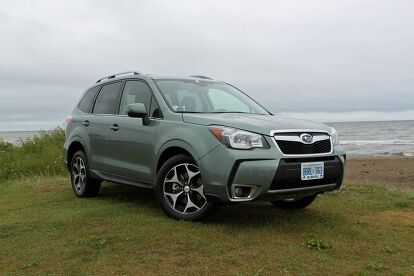
























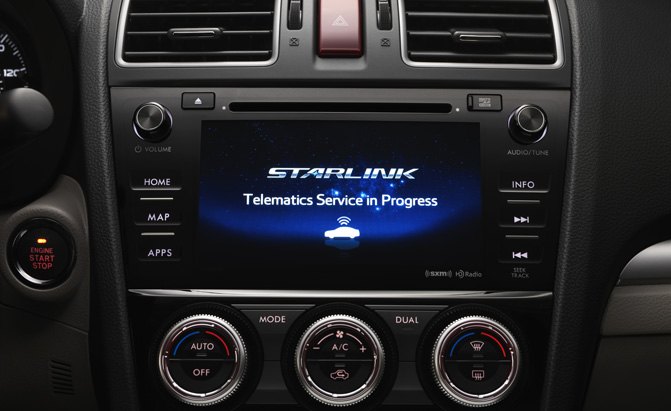



















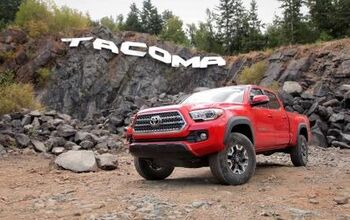



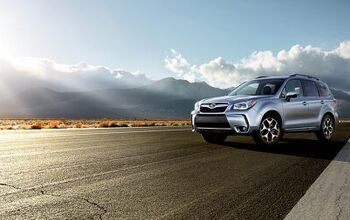

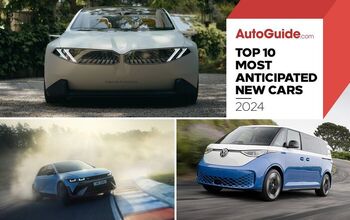

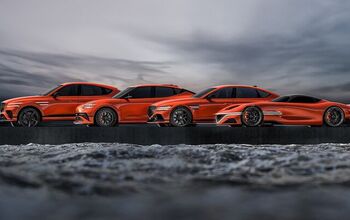
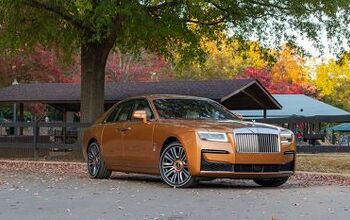
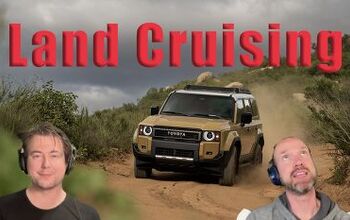

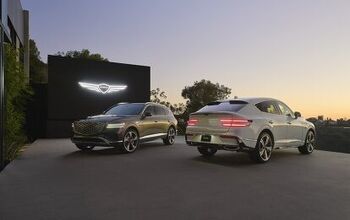
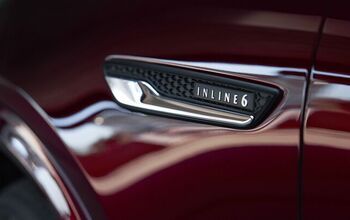
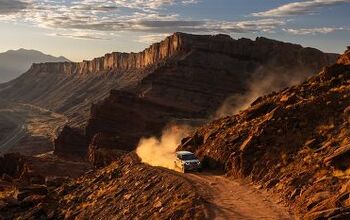
Comments
Join the conversation
I bought a 14 Forester 2.5X two years ago and live in way South Georgia. Since it has been in 33 states and five Canadian provinces but some severe shortcomings have soured the experience. The jokeahama tires were noisy and ROUGH riding so they got changed out for Pirellis at 11K and the Pirellis wore out after 27K more. Mostly happy but several sore spots that would keep me from buying another are the sound system (basic) and the aircraft carrier sized black dash board. When the midday sun is shining in the South the black dash gets hot and the heat rolls up right over the AC into your face (white exterior and light grey interior, why a black dash?). I am on my third radio (they just quit working) and it has a terrible interface that just drops the bluetooth at random times (just as you pull onto the interstate and get up to speed) or won't connect without a five minute episode of button pushing. It doesn't give any info about the song name or artist even though the music source provides it. Thankfully I didn't get the dash touch screen or back up camera or the eye sight. I just did 2500 Klicks in the Maritimes and and at 80 to 100 KPH the eye sight would have driven me crazy.
Our 2010 Forester is at 140+K mileage is slowly requiring maintenance per our local mechanic: brake pads (though I don't hear squealing), timing belts, and the heat shield is at it again with the rattling at low rpm. Per Edmunds dot com, trade-in is at $5k, some dealers are willing to take $10k difference for a $28K Premium (no Eyesight just floor mats). We're torn between doing the total 150K maintenance vs trading it in/ selling ourselves for a later 2016 once the 2017 starts pushing them out. Yes, it'll lower our availability for the 2016, but, we're assuming it'll be a better price point. Should we jump into the 2016 or just wait till the better equipment/ soundproofed 2017? Thanks